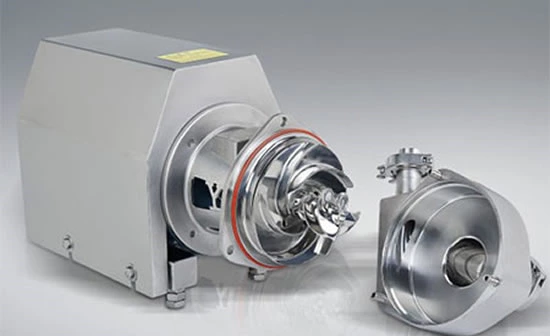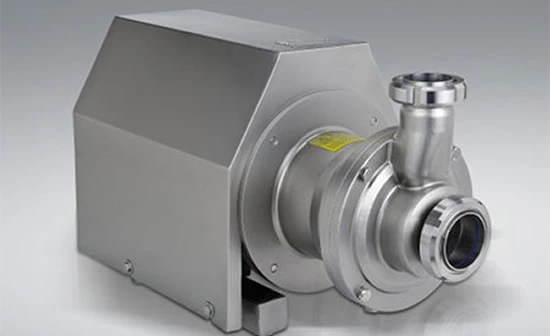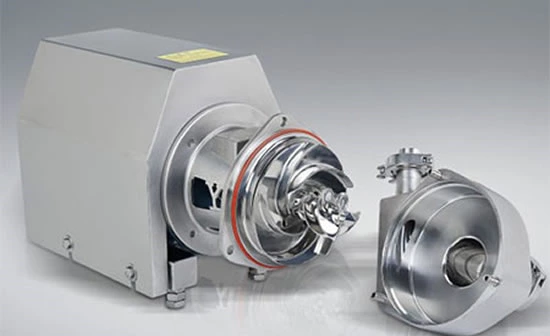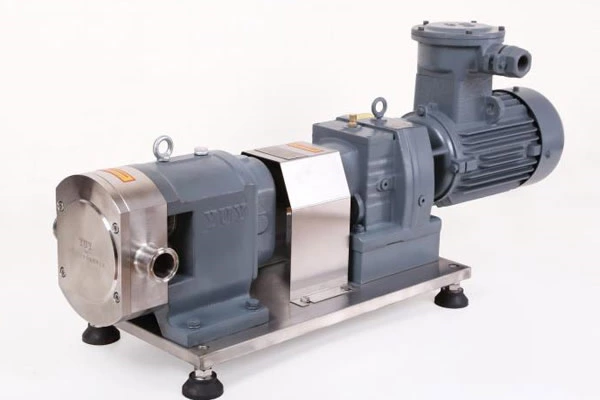Introduction to the working principle of sanitary pumps
The impeller is installed in the pump casing and fixed on the pump shaft, and the pump shaft is directly driven by the motor. There is a suction pipe in the center of the pump housing. The liquid enters the pump through the bottom and the suction line. The liquid discharge port on the pump casing is connected to the discharge pipe.
Before the sanitary pump is started, the pump casing is filled with the liquid to be conveyed; after the start, the impeller is driven by the shaft to rotate at a high speed, and the liquid between the blades must also rotate. Under the action of centrifugal force, the liquid is thrown from the center of the impeller to the outer edge to obtain energy, so that the outer edge of the impeller enters the volute at a high speed. In the volute, the liquid is decelerated due to the gradual expansion of the flow path, and part of the kinetic energy is converted into static pressure energy, and finally flows into the discharge pipe at a relatively high pressure and is sent to the position therein. need. When the liquid flows from the center of the impeller to the outer edge, a certain vacuum is formed in the center of the impeller. Since the pressure above the tank level is greater than the pressure at the pump inlet, the liquid is continuously pressed into the impeller. It can be seen that as long as the impeller rotates continuously, the liquid is continuously sucked and discharged.










